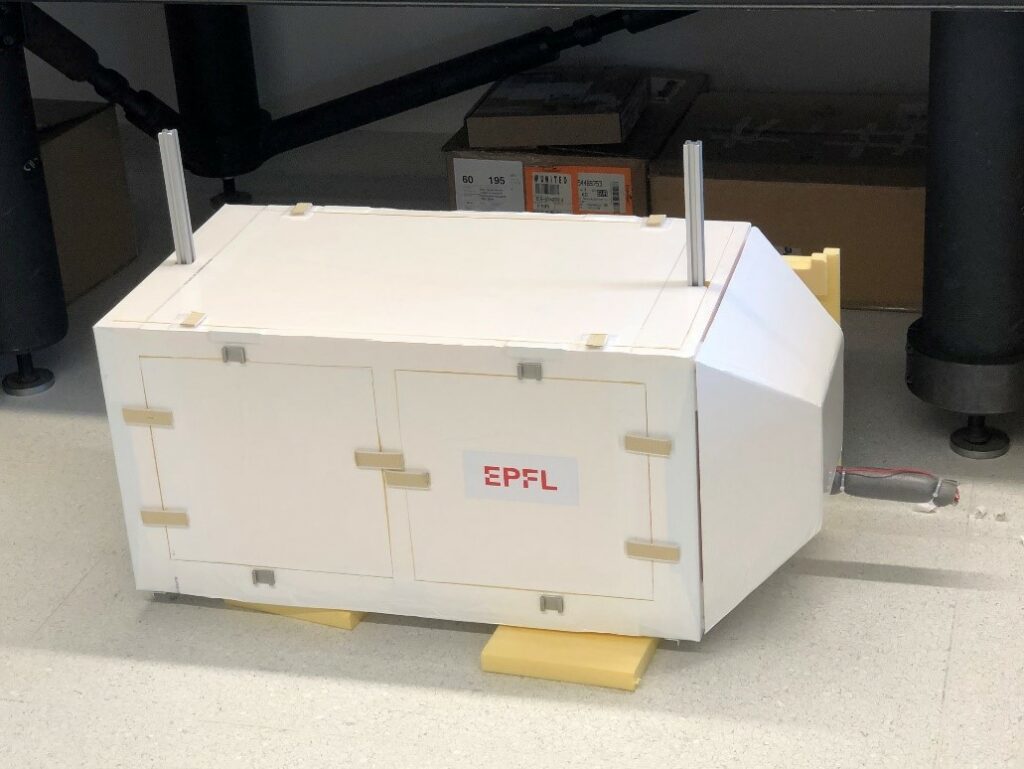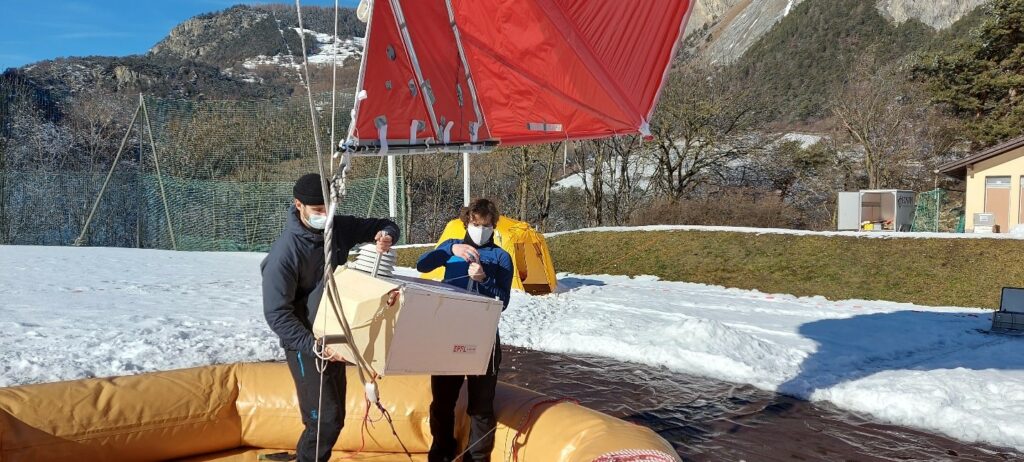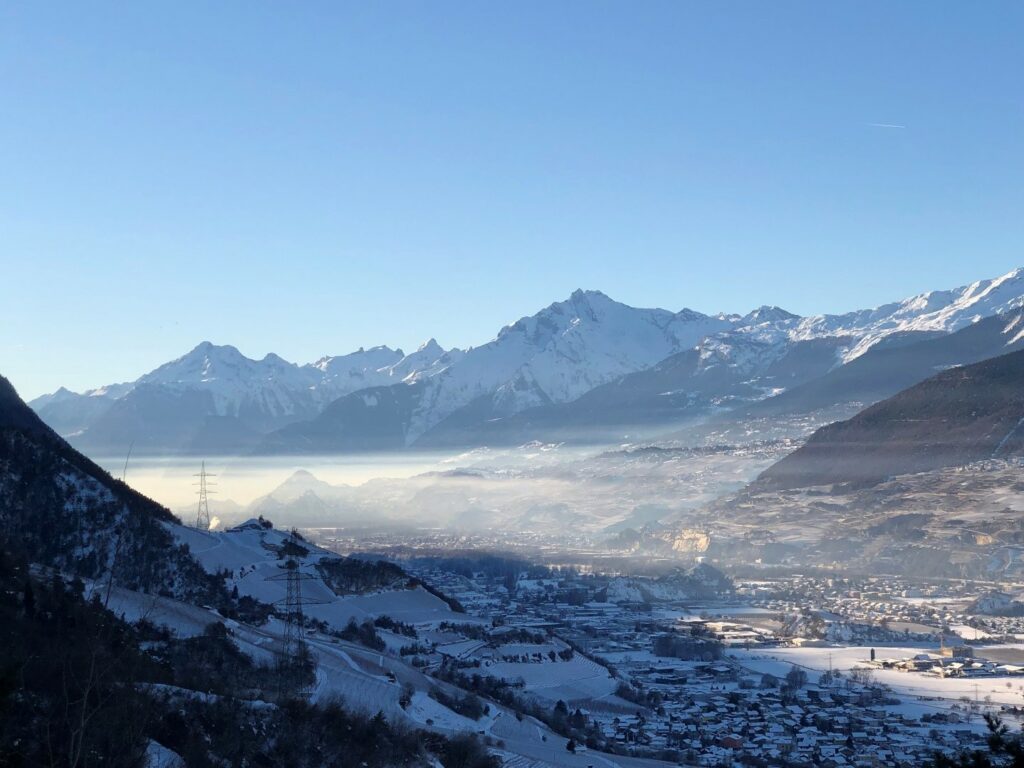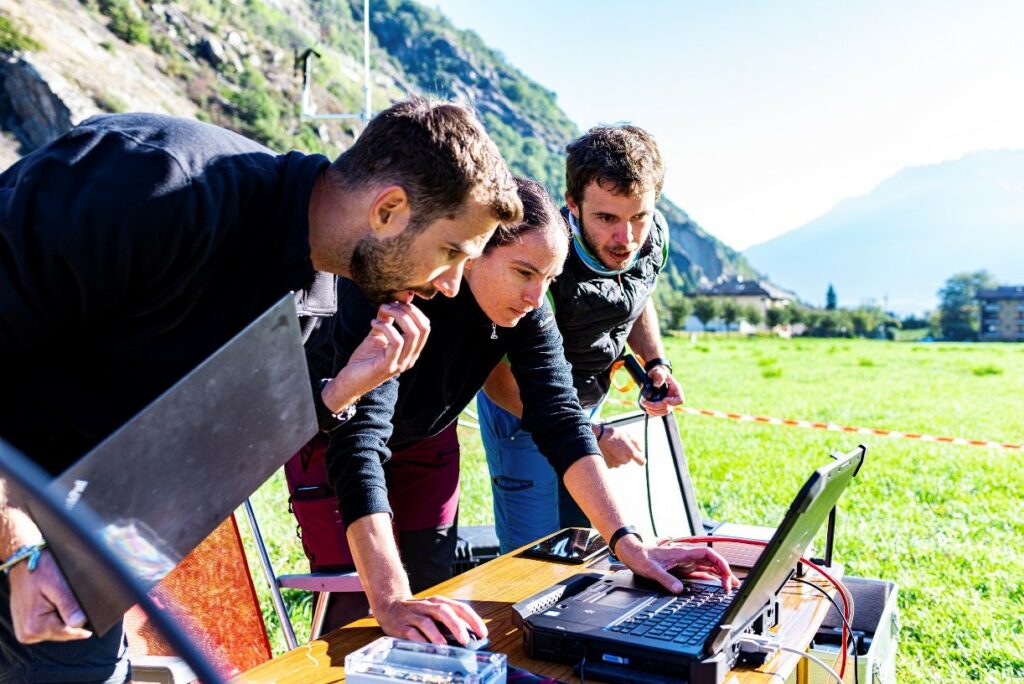MoMuCAMS stands for Modular, Multiplatform-Compatible Air Measurement System. Behind what at first seems like a mouthful, lies what may appear as a simple box carrying a set of instruments (Fig. 2). The truth is more complex than that…
It all started in May 2020 in the Extreme Environments Research Lab at EPFL, from an almost blank sheet of paper. The goal? Design and build a system capable of carrying a set of instruments under a tethered-balloon which would be used to lift the instruments in the air. The vertical aerosol and trace gas measurements acquired in this way will help answering some important climate and health-related questions. The novelty of this system lies in its flexibility. With its ability to fly different instrumental setups, MoMuCAMS is able to carry some of the most comprehensive instrumental combinations (some instruments being flown under a tethered-balloon for the very first time) retrieving unique data sets to address relevant scientific questions related to the impact of aerosols on health and climate.

With the goal to have a first field study by January 2021, time was tight for my PhD student, and several important milestones had to be achieved quickly. In essence, the system is a box made of polystyrene. The box has the important task of carrying the instruments up to an altitude of 800m above ground level and protect them from rough environmental conditions such as cold, precipitation, UV radiation and wind. A custom-made computer has been designed to collect data, monitor the status of the instruments and communicate remotely with the operator, helping the team on the ground in taking decisions according to the situation.
MoMuCAMS has wings!
By the end of 2020, a prototype was ready for its very first flight. The first field campaign took place in January 2021 in Sembrancher, a small town located in the Val de Bagnes, in Switzerland. Situated at the bottom of a narrow valley with traffic and nearby industries, Sembrancher was an ideal study site featuring frequent surface temperature inversions inducing a stratified atmosphere and a layering of aerosol particles.
Flying a helikite (a helikite is a type of tether-balloon design to remain very stable in windy conditions, Fig. 1) requires a substantial amount of logistics, for the balloon, the anchoring system, the winches, the power lines for all the systems etc. The following video clip shows the initial setup phase and some footages of the helikite in the air.
https://tube.switch.ch/videos/Ncxp0cRokb
The objective of this first campaign was to test the main systems and identify what needed to be improved in order to tackle the research questions MoMuCAMS had been designed for. Testing included whether the payload could be safely attached to the balloon and flown correctly, establishing remote communication with the payload, lifetime of batteries in real operations and of course data collection.
You may wonder how we first tested the lifting capacity and flight behavior of the system, without putting any expensive instruments at risk. As a Swiss research lab, the solution was evident. We replaced our instruments by chocolate to simulate the weight of the instruments. Hence, the inaugural flight carried a bunch of chocolate bars that were later distributed as gifts to the people who helped us make this campaign happen. 😉
Overall, despite a few hiccups and a lot of snow shovelling, the outcome of these 3 weeks was very promising. Totalising 42 vertical profiles over 12 different flights with a maximum altitude of 658 meters above ground level reached, we learned a lot about the system. With all the lessons learned during this first campaign, we were able to define the major points to improve for the future, with one point standing above all: Reduce the weight of the payload!

Brigerbad – Fall 2021
Building on the conclusions of this first experience, it was decided to conduct another field campaign in Switzerland, which would allow testing the adaptations made to the system and move into serious data collection. This time, we selected the town of Brigerbad located in the Rhone valley. The aim was to catch temperature inversions to measure particles across conditions like the one we see in the following picture (Fig. 4), where one can clearly see stratified layers of air.

After putting a lot of efforts and consideration into the new design, we managed to reduce the overall weight of the payload by about 7.5 kg! This weight reduction made a substantial difference for flight operations and allowed us to fly more instruments and to higher altitudes.
Brigerbad has been an intense 4-week campaign with flights almost every day. We rapidly tested all the new adaptations and could quickly focus on flight strategies dedicated to our scientific questions. The campaign came with its fair share of challenges. Flying a tethered-balloon is not an easy task and it takes some real perseverance from the team to collect data. Nevertheless, overall this second campaign was extremely positive and gave confidence to the team that the system was now ready for the next step: Flying MoMuCAMS in Alaska the next winter!

This research was supported by the SPI Technogrant held by Julia Schmale, Extreme Environments Research Laboratory (EERL), EPFL. Roman Pohorsky is a PhD student and Andrea Baccarini a postdoctoral researcher at EERL.
Header photograph, referred to as Fig. 1 in this blog post: Helikite carrying the MoMuCAMS payload over Sembrancher. © Julia Schmale, all rights reserved